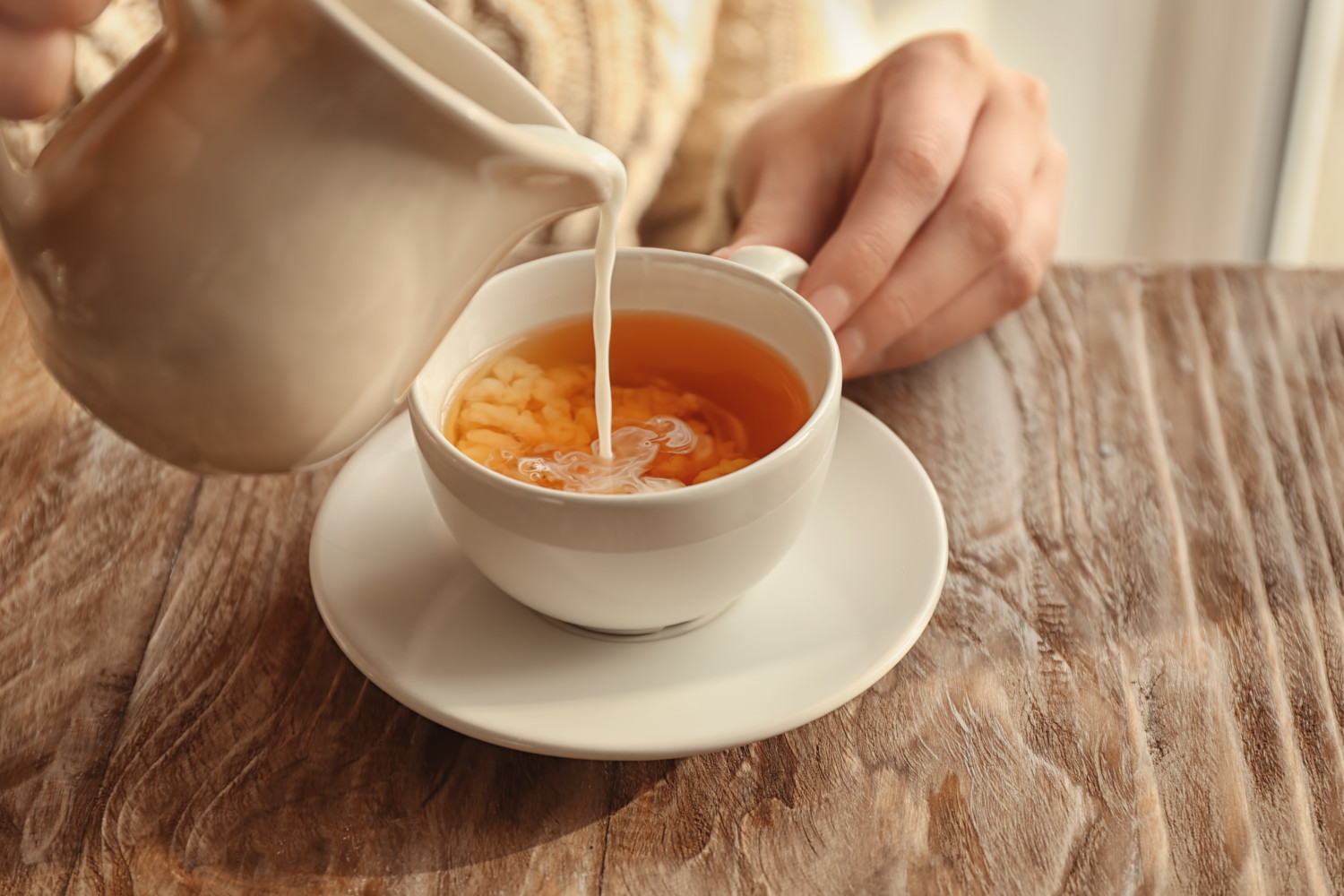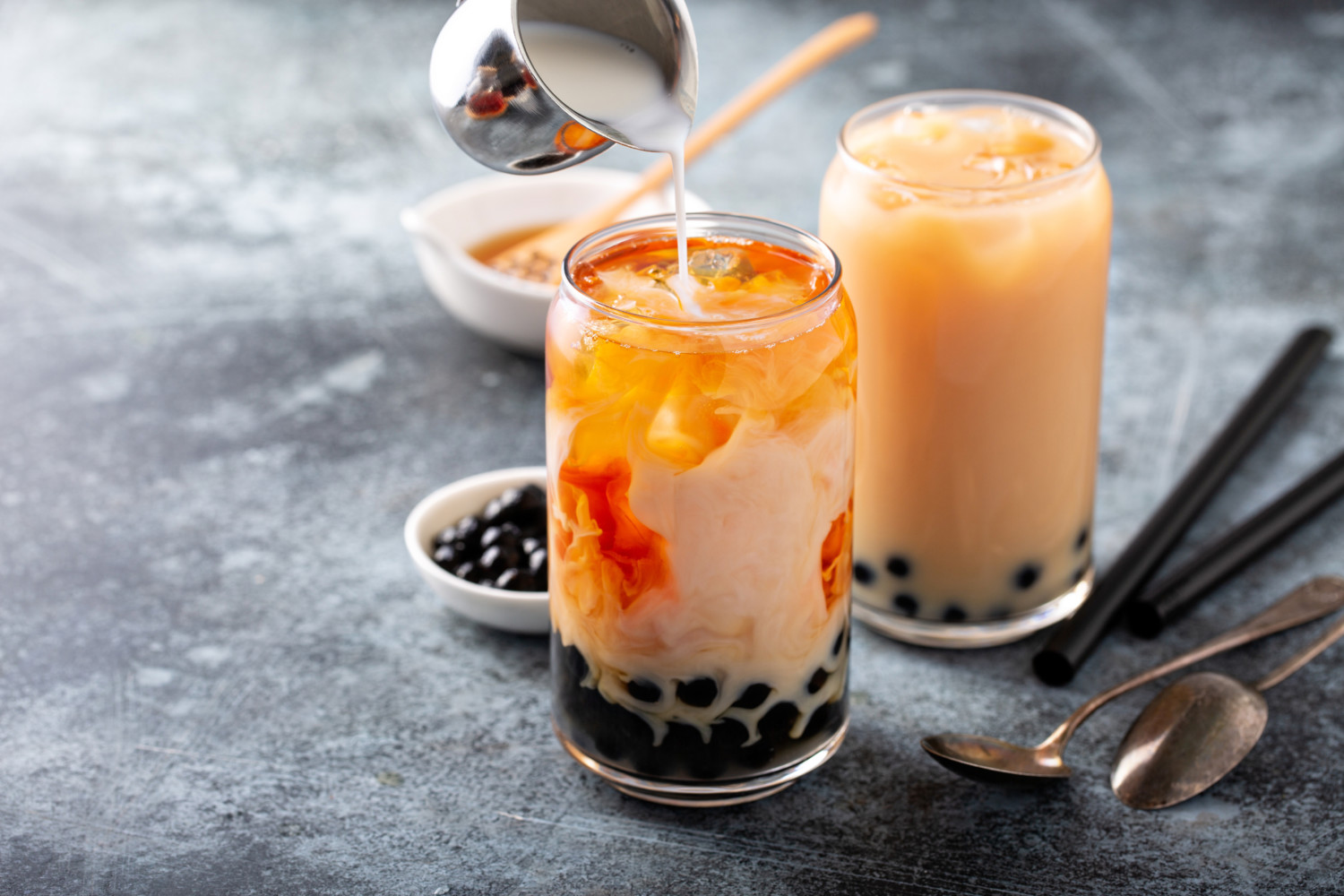Do you enjoy a splash of milk with your tea or are you a plain-Jane kind of tea drinker? Would you prefer to sip it poured over ice or piping hot? In a bag or loose leaf? Some people snub their noses at tea while others claim it’s better than coffee. No matter what, people have their opinions on how to brew, whether sugar should be added and what type of tea is best. Then the debate goes even further as to whether milk should be added at all and if so, should this be done before or after the tea is poured?
While it’s hard to know for sure what the original intention of drinking tea with milk stems from, there are many theories as to why or how people began doing it to begin with, more than one of which has nothing to do with flavor.
The British have been putting milk in their tea since the 18th century, when it was brewed in pots and enjoyed from china cups. The problem was that fine bone china was expensive and unattainable for many people and the cups would crack from the heat of the boiling tea. By pouring milk into the cup first and then adding the tea, the cold milk cooled it down enough to keep the china from cracking.
Another theory is that since tea was so costly at the time that families couldn’t afford large quantities of it. So those families would have milk with a splash of tea, while well-to-do families may have tea with a splash of milk.

Long voyages at sea and improper storage may have left tea less than palatable in the old days, according to another theory. Some say milk was added to even out harsh, bitter flavors. Another thought is that it all came down to nutrition. Tibetan teas contained dairy and butter to add nutrition and to stave off hunger.
This is thought to be why working-class Brits drank milk with tea and sugar during the industrial revolution, strong cups that came to be known as “Builder’s Tea.” The caffeine in black tea would act as a stimulant while the milk and sugar helped provide energy to power them through the day.
Why Putting Milk In First Makes A Difference
Some people believe putting milk in first and then pouring tea on top makes it taste better. This might be because when you add hot tea to cold milk, you’re bringing the milk to the temperature of the tea, which distributes the flavor more uniformly. The Guardian reports that science actually backs this, proving that it’s more evenly distributed. The uneven heating of adding cold milk on top of hot tea can cause milk proteins to denature, which means they could lose their structure and clump, which not only affects the taste, it can leave a skin at the top.
Different Types of Tea With Milk
There really is no right or wrong way to drink tea with milk. People all over the globe go for a spot of tea served in various ways. Here are just a few of the most common mixes:
Tea Latte: Any variety of tea served with steamed or froth milk. It can be sweetened or unsweetened.
Builder’s Tea: Often inexpensive, strong black tea with milk and at least a lump or two of sugar.
Masala Chai: Indian Assam tea is jam-packed with spices and served with milk for a robust beverage.
London Fog: This tea latte is a combination of Earl Grey, frothed milk and a touch of vanilla.
Thai Tea: A sweet mixture of tea, evaporated milk, sweetened condensed milk and sugar served over ice with an Assam or Ceylon base.
Hong Kong-Style: Black tea served hot with evaporated or condensed milk.
Okinawa Milk Tea: A style that originates from Japan and consists of black tea with milk and Okinawa brown sugar.
Boba Tea: Also known as bubble tea or pearl milk tea, this popular beverage originated in Taiwan and is served cold and sweet with tapioca pearls that can be sucked through large straws. It comes in many flavors from black tea to fruity or floral versions.

Health Benefits of Tea With Milk
While all types of tea provide positive health benefits, black and green teas rank at the top of the list and are widely researched. Both are crafted from leaves of the Camellia sinensis plant but undergo varying processing methods. These teas are rich in flavonoids, which help fight underlying cell damage caused by reactive molecules, also known as free radicals. They’re associated with lower blood pressure, reduced cholesterol levels and tout anticancer effects.
Cow’s milk, meanwhile, has its own benefits, providing vital nutrients, including calcium, potassium, vitamin D and protein. It can help maintain bone mass, keep teeth healthy and ward off osteoporosis. Soy, oat and almond milk are excellent dairy-free alternatives and all work well when paired with tea.

It’s inconclusive if adding milk to tea specifically enhances its health advantageous, but both ingredients separately are beneficial. The data is mixed as to whether milk proteins may interfere with tea’s compounds. If you’re counting calories, adding milk to tea obviously adds a few, as well.
Regardless of whether you add milk, a cube of sugar, ice or like it as-is, sipping and savoring tea is a ritual indulged in around the world in a variety of ways.
This story originally appeared on Simplemost. Checkout Simplemost for additional stories.


